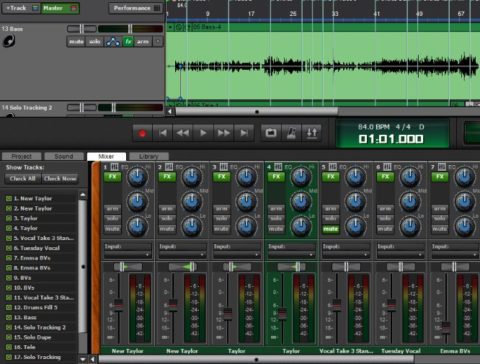UPDATE: I cranked up the bass a little on the latest mix, check it out, it’ll get your blood pumping…
I posted my song, The Silent Spring from critique on one of the songwriter forums and got a few listens and some nice positive comments, in particular with regard to the mastering I did…an area in which I’m really just a novice.
But, here are a few notes about what I did, just for my own personal notekeeping to be honest, but others might find them interesting if they’ve listened to the song. I suppose I could share the pre-mastered version, but there’s little point suffice to say it sounds quite dull and lifeless tonally compared to the mastered version, which is bright, sparkly and fills the stereo field with crisp and clear resolution between the different instruments and voices, thanks to my tweaking a preset in the iZotope Ozone mastering software, not because of any skill of mine (other than listening and feeling that it sounded right).
From my reply to the forum:
Mastering…I really ain’t an expert. But it seems to boil down to getting all the parts to sound as good as you can individually and making them work together at that level first (getting a good mix, in other words) and then working at the master track level to do EQ (equalisation), stereo imaging/widening, compression (to dampen down any too loud bits) then maximising/limiting to bump up the sound without it distorting in that order on the whole thing as a whole. Oh, some reverb in there too, to bring it all together and give it an ambience as if you’re hearing it in a hall or something.
You can do all that with the basic plugins, the VSTs, in my DAW (digital audio workstation, it’s Mixcraft, which is like Garage Band but for Windows). But for this song, I used a demo version of iZotope Ozone 5 and started from one of its presets called “Excitation and widening” and moved the various sliders or which there are many until it sounded as good as I could get it to sound to my ears in my headphones…
In future productions, I will try and emulate what Ozone does using VSTs for those four/five components mentioned above (thanks to MonoStone for spelling them out for me via email, he’s the real expert). I should also namecheck James Z, who gave me some early EQ lessons but also pointed out what mastering can do.

I think in the old days mastering was more about making a tune work for the pressing technology of vinyl records. These days it’s really just about adding sparkle and width to the song and improving the clarity (and boosting it for radio), so that each track you scooped and FXed sounds as good as possible sitting in with all the others.
This song has quite a few tracks – lead vocal, three sets of backing vocals (with the female doubled), lead guitar, lead guitar for solo (doubled), electric rhythm guitar, acoustic rhythm guitar (doubled), arpeggio acoustic guitar (doubled), bass guitar, percussion, I think that’s it…
I reckon I’ve spent about 10-15 hours on it in total from writing the first chord progression and ad libbing the lyrics to recruiting Emmazen and mastering it…and not counting the 37 years of playing guitar before getting to that point, hahahah.
You can hear the song via the Sciencebase Dave Bradley BandCamp page or on Soundcloud.